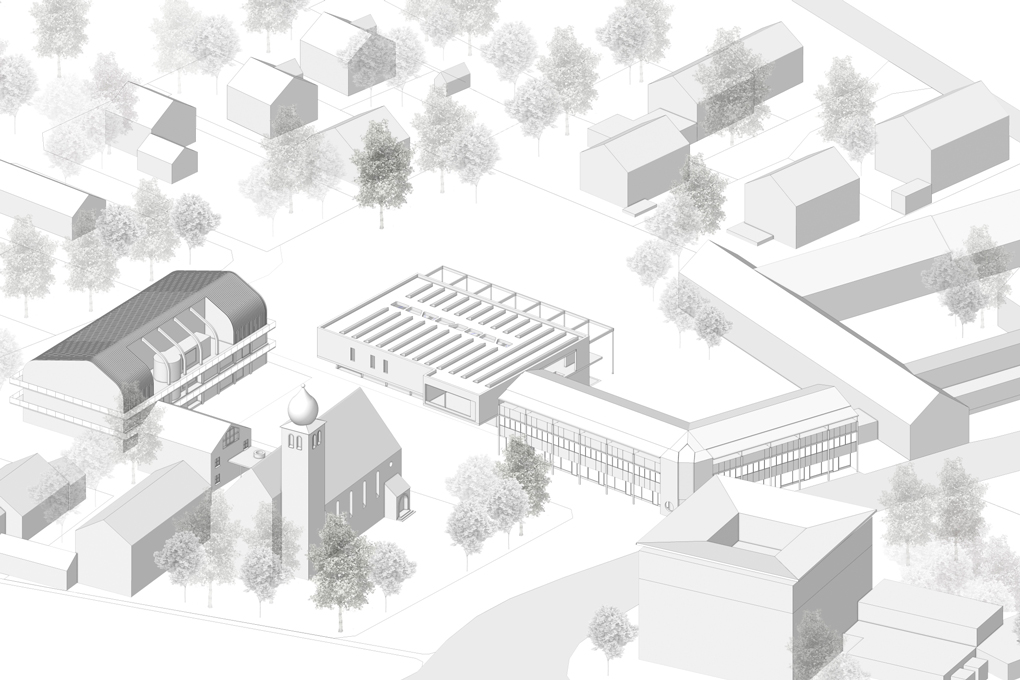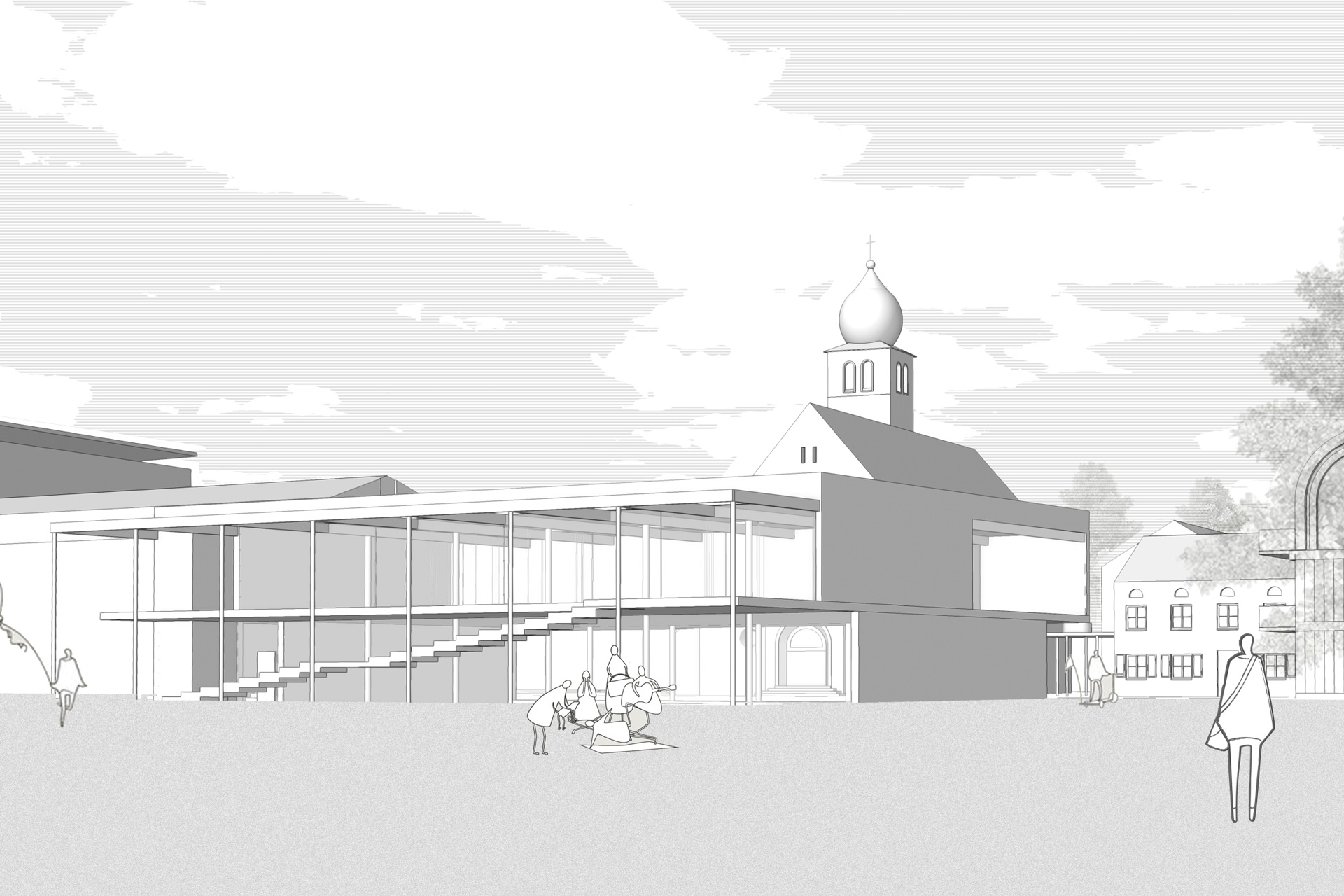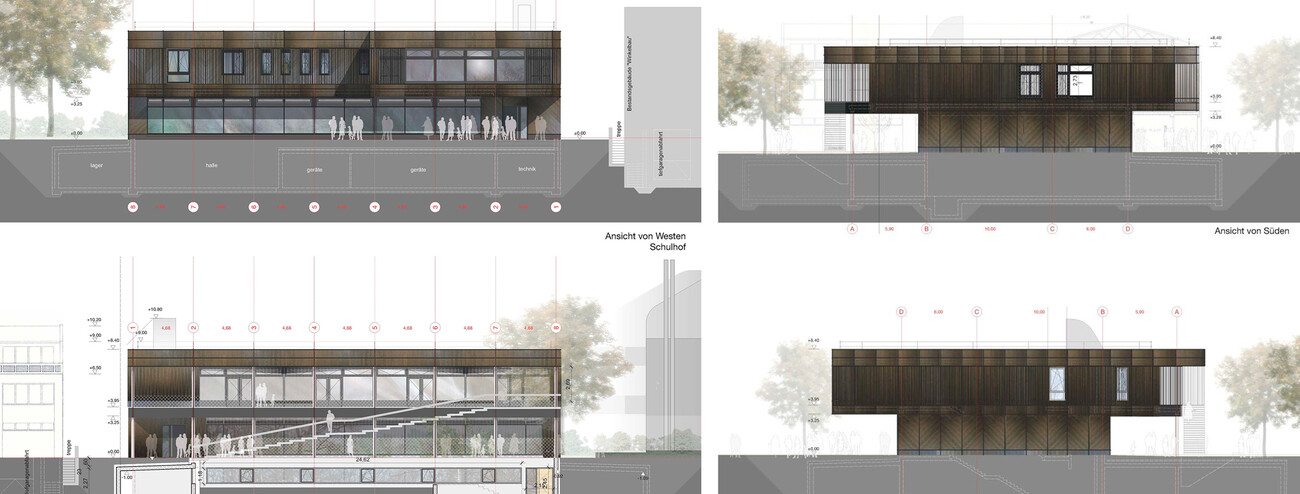Gymnase avec Crèche, Vaterstetten, Allemagne

The aim of the project is a CO2-neutral building operation, in a building that offers a high level of comfort for the users with as little technology as possible. Therefore, high-tech solutions were deliberately avoided as much as possible and the human being was included as a decisive factor, which calls for a detailed introduction.
The building has two levels: A gymnasium that is slightly lowered into the ground, above which are the rooms of the day care center.
For basic ventilation, the day care center receives fresh air through ventilation elements in the west facade. Brought into the room without drafts, the air flows via ducts and overflows into the adjoining rooms from where it goes out fan-driven. Shock ventilation is provided as required.
At night in summer, cooling is purely passive. For this purpose, motors open the dampers and skylights in a time-controlled manner. To do this, the system must be actively activated via a pushbutton. Then all external sunshade hangings are retracted and the ventilation flaps are opened. The next morning, the ventilation flaps close again and the sun protection is lowered to prevent the rooms from heating up in the morning. Additional ceiling fans, which can be individually controlled, provide summer comfort.
For night cooling to work, the ceiling has not been suspended, the thermal mass remains sufficiently free.
The gymnasium is operated with window and shock ventilation. Skylight strips, which can be opened by a motor, are used for fresh air access. During normal sports use, the dampers create a small air gap; alternatively, shock ventilation is possible. During an event, the ventilation flaps are also open, and the flaps in the shower are used in parallel. With the doors open, fresh air then enters the hall "preheated" via the shower room, and the exhaust air escapes there via the flaps in the skylight strips.
In summer, nightly cross-ventilation in the gymnasium also ensures cooling of the thermal mass. As in the after-school care center, the time control of the flaps must be activated manually for this purpose.
District heating is planned for both space heating and hot water generation.
Local renewable energy generation via photovoltaics on the roof provides electrical power. The area is just barely sufficient to balance the energy use of the building. Transsolar therefore recommends that the connecting roof between the gymnasium and the adjacent school be additionally covered with PV modules.

